High-resolution Images Of Pluto Taken By NASA’s New Horizons Spacecraft.
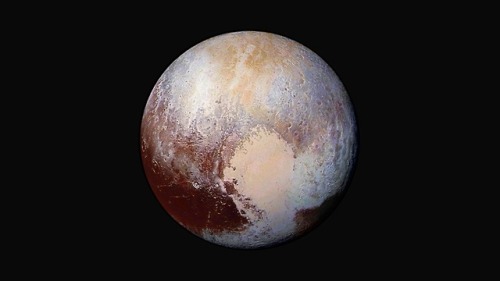

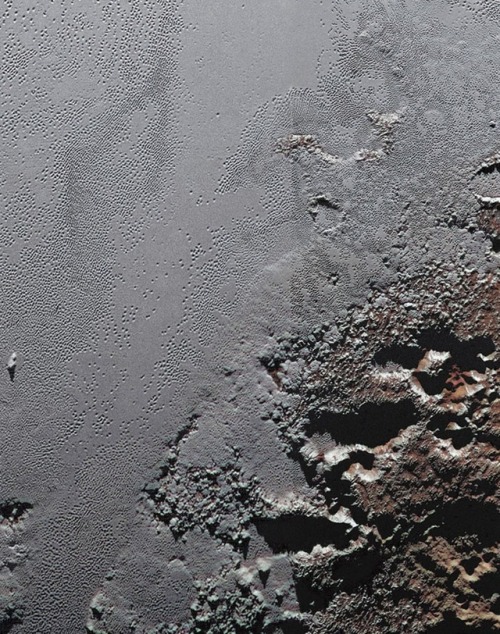
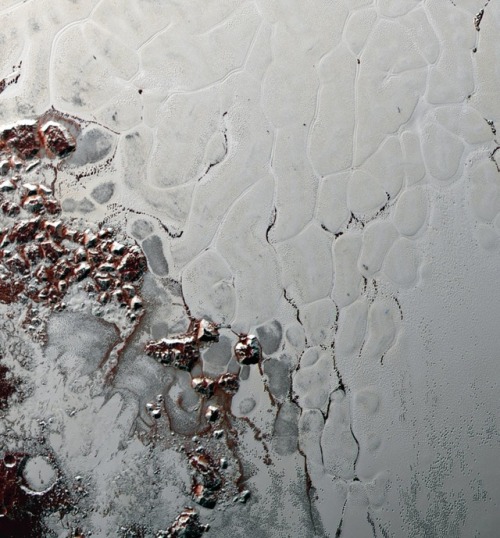
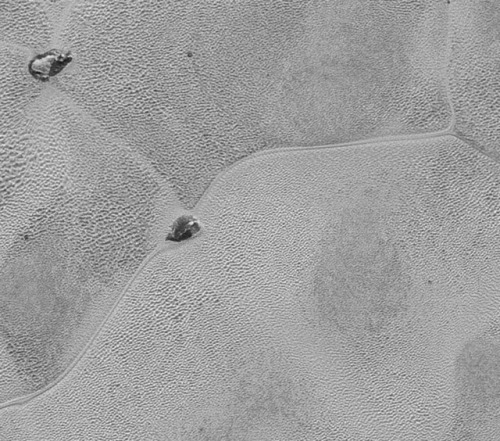
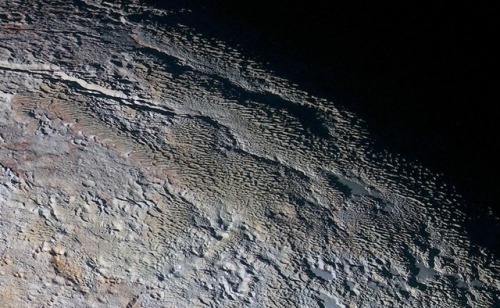
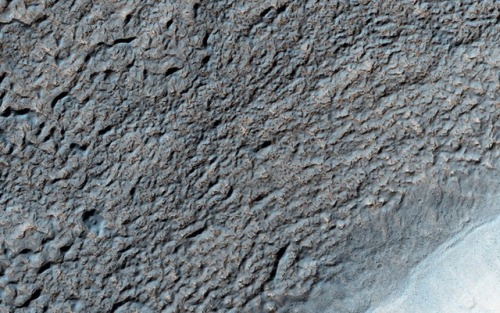
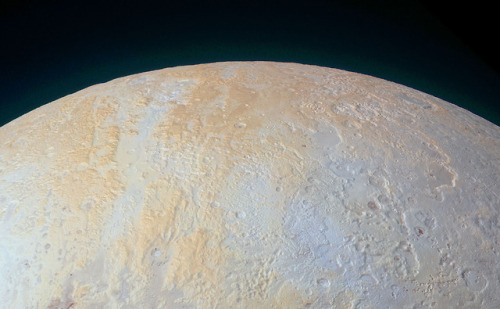
High-resolution images of Pluto taken by NASA’s New Horizons spacecraft.
The plains on Pluto’s surface are composed of more than 98 percent nitrogen ice, with traces of methane and carbon monoxide. Nitrogen and carbon monoxide are most abundant on the anti-Charon face of Pluto (around 180° longitude, where Tombaugh Regio’s western lobe, Sputnik Planitia, is located), whereas methane is most abundant near 300° east. The mountains are made of water ice. Pluto’s surface is quite varied, with large differences in both brightness and color. Pluto is one of the most contrastive bodies in the Solar System, with as much contrast as Saturn’s moon Iapetus. The color varies from charcoal black, to dark orange and white. Pluto’s color is more similar to that of Io with slightly more orange and significantly less red than Mars. Notable geographical features include Tombaugh Regio, or the “Heart” (a large bright area on the side opposite Charon), Cthulhu Macula, or the “Whale” (a large dark area on the trailing hemisphere), and the “Brass Knuckles” (a series of equatorial dark areas on the leading hemisphere). Sputnik Planitia, the western lobe of the “Heart”, is a 1,000 km-wide basin of frozen nitrogen and carbon monoxide ices, divided into polygonal cells, which are interpreted as convection cells that carry floating blocks of water ice crust and sublimation pits towards their margins; there are obvious signs of glacial flows both into and out of the basin. It has no craters that were visible to New Horizons, indicating that its surface is less than 10 million years old.
source | images: NASA/JPL
More Posts from Epic-flight and Others

Young Stars of NGC 346 : The massive stars of NGC 346 are short lived, but very energetic. The star cluster is embedded in the largest star forming region in the Small Magellanic Cloud, some 210,000 light-years distant. Their winds and radiation sweep out an interstellar cavern in the gas and dust cloud about 200 light-years across, triggering star formation and sculpting the region’s dense inner edge. Cataloged as N66, the star forming region also appears to contain a large population of infant stars. A mere 3 to 5 million years old and not yet burning hydrogen in their cores, the infant stars are strewn about the embedded star cluster. In this false-color Hubble Space Telescope image, visible and near-infrared light are seen as blue and green, while light from atomic hydrogen emission is red. via NASA

Charon, moon of Pluto, observed by NASA's New Horizons probe just before closest approach on this day in 2015. (It flew within 12,500 km of Pluto and as close as 27,000 km to Charon.)
🤠🤠🤠🤠


(Link)
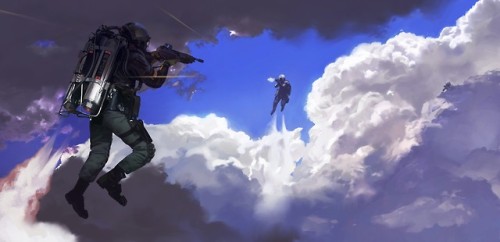

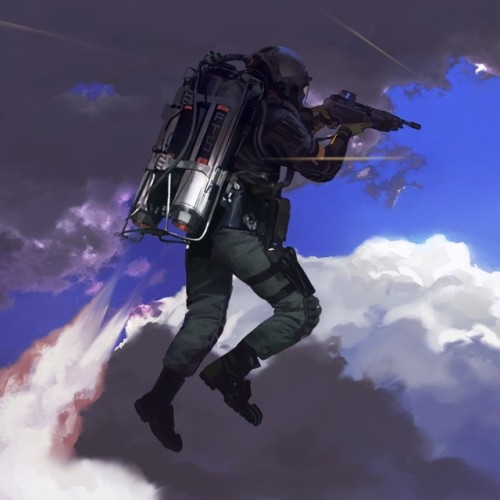
Jet pack - Faraz Shanyar

Start of Everything.
Twitter / Instagram / Gumroad / Patreon
KnownOrigin / SuperRare / OBJKT / Zedge
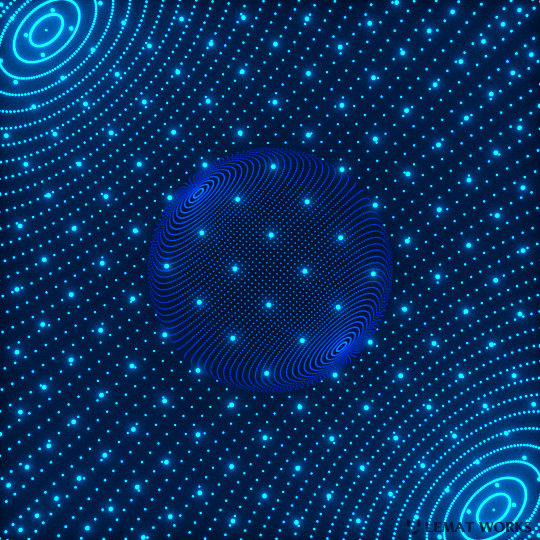
Produced by LEMAT WORKS
Dot Planet1 2 3 4 5 6 7 8 9 10 11 12 13 14 15 16 17 18 19 20 21 / Twinkle Night3 15 17 22 27 29 / LEMAT LINK / Behance(High Resolution)✨
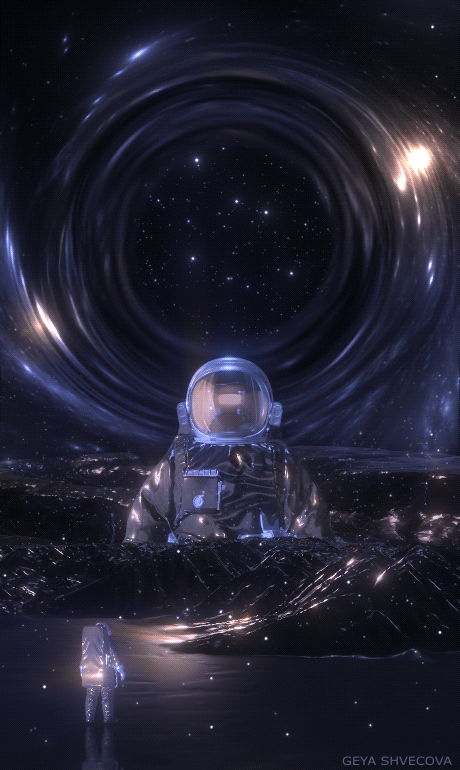


Design graphics Geya Shvecova (Jump into the void) Archive_020920

Mental Process.
You can get this GIF as a phone wallpaper for free through the Zedge app.
You can also get this GIF as a looping 1080p video if you support me on Patreon.
Twitter / Instagram / Shop / Gumroad / Patreon / Zedge
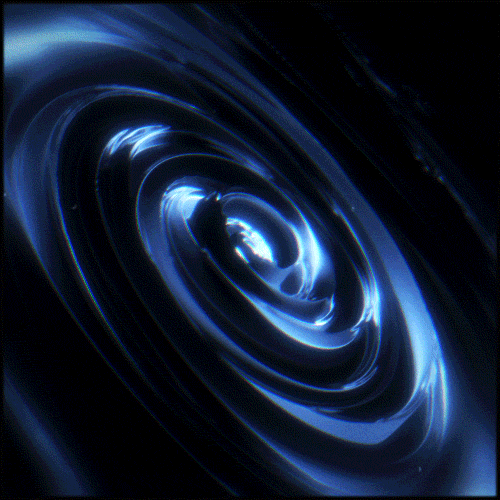
Space & Sound.
You can get this GIF as a phone wallpaper for free through the Zedge app.
You can also get this GIF as a looping 1080p video if you support me on Patreon.
Twitter / Instagram / Shop / Gumroad / Patreon / Zedge
-
 slepkane liked this · 7 months ago
slepkane liked this · 7 months ago -
 gazztron liked this · 7 months ago
gazztron liked this · 7 months ago -
 amphibium reblogged this · 7 months ago
amphibium reblogged this · 7 months ago -
 timespanner reblogged this · 7 months ago
timespanner reblogged this · 7 months ago -
 under--the--radar liked this · 7 months ago
under--the--radar liked this · 7 months ago -
 daelenn reblogged this · 7 months ago
daelenn reblogged this · 7 months ago -
 daelenn liked this · 7 months ago
daelenn liked this · 7 months ago -
 gnosticnewbie liked this · 7 months ago
gnosticnewbie liked this · 7 months ago -
 lothiriel84 liked this · 7 months ago
lothiriel84 liked this · 7 months ago -
 ibrithir-was-here liked this · 7 months ago
ibrithir-was-here liked this · 7 months ago -
 wiliecoyotegenius reblogged this · 7 months ago
wiliecoyotegenius reblogged this · 7 months ago -
 lamoorgalore liked this · 7 months ago
lamoorgalore liked this · 7 months ago -
 thethirdromana reblogged this · 7 months ago
thethirdromana reblogged this · 7 months ago -
 thethirdromana liked this · 7 months ago
thethirdromana liked this · 7 months ago -
 shimyereh liked this · 7 months ago
shimyereh liked this · 7 months ago -
 animate-mush reblogged this · 7 months ago
animate-mush reblogged this · 7 months ago -
 cathtatedaily liked this · 1 year ago
cathtatedaily liked this · 1 year ago -
 starhasthefuturevisons liked this · 1 year ago
starhasthefuturevisons liked this · 1 year ago -
 cdidou liked this · 1 year ago
cdidou liked this · 1 year ago -
 lowcountry-gothic liked this · 1 year ago
lowcountry-gothic liked this · 1 year ago -
 burekstation liked this · 1 year ago
burekstation liked this · 1 year ago -
 enmity-encountered reblogged this · 1 year ago
enmity-encountered reblogged this · 1 year ago -
 enmity-encountered liked this · 1 year ago
enmity-encountered liked this · 1 year ago -
 animate-mush reblogged this · 1 year ago
animate-mush reblogged this · 1 year ago -
 yuriggv reblogged this · 1 year ago
yuriggv reblogged this · 1 year ago -
 733s reblogged this · 1 year ago
733s reblogged this · 1 year ago -
 aainaalyaa liked this · 2 years ago
aainaalyaa liked this · 2 years ago -
 novagoatia reblogged this · 2 years ago
novagoatia reblogged this · 2 years ago -
 novagoatia liked this · 2 years ago
novagoatia liked this · 2 years ago -
 sinbad-the-merchant liked this · 2 years ago
sinbad-the-merchant liked this · 2 years ago -
 hallamfoe reblogged this · 2 years ago
hallamfoe reblogged this · 2 years ago -
 poopypoops-world liked this · 2 years ago
poopypoops-world liked this · 2 years ago -
 contemporaryuser reblogged this · 3 years ago
contemporaryuser reblogged this · 3 years ago
